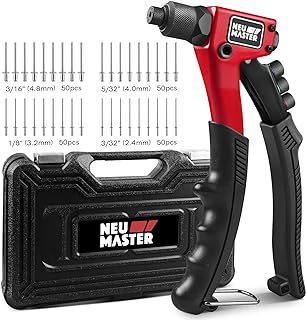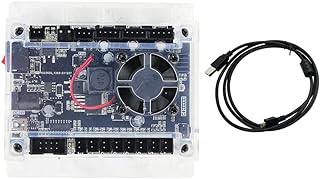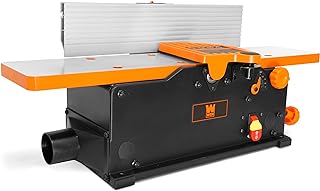5 important factors worth considering when looking for the best buffing wheel for lathe
Selecting the best buffing wheel for your lathe is important for getting good finishing results. You need to think about what you need and what you like. The material, size, density, and compatibility of the wheel are all important. They all affect how well your buffing will work. Knowing how these factors are important can make your experience better and make your workpieces shinier.
See our guide to the best buffing wheel for lathe.
Material of the buffing wheel
When choosing a buffing wheel for your lathe, it’s important to focus on quality rather than price. Materials like cotton, felt, and sisal offer the best performance and durability. Cotton wheels are good for general buffing, while felt wheels give a smooth finish for delicate items. Sisal wheels are best for tough jobs due to their strong cutting power.
While cheaper options may be tempting, investing in high-quality materials will improve the efficiency and accuracy of your buffing tasks. The material of the buffing wheel also greatly affects the final look of your work. A top-quality buffing wheel creates a polished surface and reduces the risk of scratches.
By choosing the right material based on your needs and preferences, you can enhance the quality of your work. Remember, the buffing wheel is a crucial part of your projects, not just a tool. Prioritize quality and performance when selecting a buffing wheel material to achieve professional results that show your commitment to excellence.
Size and shape of the buffing wheel
When choosing a buffing wheel for your lathe, it’s important to consider both the size and shape to get the results you want. The size of the wheel should match the projects you do often and the size of your lathe. A larger wheel is good for big projects because it covers more area and buffs faster. A smaller wheel is better for detailed work because it gives you more control.
The shape of the buffing wheel also matters. A cylindrical wheel is good for many different jobs, while a tapered wheel is good for getting into tight spaces and curved surfaces. By thinking about the size and shape of the wheel that fits your needs and projects, you can make your lathe work more effective and efficient. This will give you smoother finishes and professional-quality results.
Compatibility with the lathe
When looking to buy a buffing wheel for your lathe, it’s important to make sure it will work well with your machine. Getting a high-quality buffing wheel made for your specific lathe model will help it work better and keep your equipment safe. Having the right buffing wheel that fits your lathe properly not only makes your woodworking projects go smoother but also makes your workspace safer and more efficient.
If you don’t pay attention to whether the buffing wheel will work with your lathe, you might end up with poor results and frustration when using it. A buffing wheel that doesn’t match your lathe can cause uneven finishes, shakiness, and even be dangerous. By checking compatibility before you buy, you can protect your lathe and have better buffing results that improve your woodworking. Essentially, how well the buffing wheel and lathe work together sets the stage for successful woodworking, where precision, efficiency, and safety come together to enhance your creativity.
Speed and RPM rating of the buffing wheel
When choosing a buffing wheel for your lathe, it’s important to pay attention to the speed and RPM rating. The speed of the wheel affects how well it buffs. If it’s too slow, your polishing may not be effective. If it’s too fast, it can overheat and damage your workpiece. Finding the right balance ensures a smooth and consistent buffing experience and lets you achieve the finish you want.
Using a buffing wheel that matches the recommended speed and RPM range for your lathe improves your work quality and extends the life of your equipment. Following the recommended parameters reduces wear and tear, making your equipment last longer. By focusing on speed and RPM rating when choosing a wheel, you can achieve optimal performance and results. This will make your buffing process smoother and enhance your craftsmanship.
Durability and longevity of the buffing wheel
When choosing a buffing wheel for your lathe, it’s important to consider durability and longevity. A high-quality buffing wheel that can handle heavy use will save you money and give you consistent results. With a durable buffing wheel, you won’t have to replace or repair it often, and you can count on smooth, polished finishes without worrying about it wearing out too soon.
The quality of a buffing wheel is shown in how long it lasts and the materials used to make it. Choosing a buffing wheel made from strong materials that resist damage will ensure it stays reliable and effective for many years. Prioritizing durability and longevity in your buffing wheel choice means you’re investing in the quality of your work and making your workflow more efficient. A good buffing wheel not only improves the look of your projects but also makes polishing easier, so you can focus on your craft without constantly maintaining or replacing the wheel.
Conclusion
In conclusion, the buffing wheel for a lathe is an important tool that improves craftsmanship by allowing for detailed and flawless finishes. It refines and polishes with precision, adding finesse to every project and combining efficiency with elegance. The buffing wheel for a lathe is a symbol of the pursuit of perfection in woodworking, empowering artisans to create beautiful and functional masterpieces from raw materials. Want more info on mitre saw, check the best mitre saw.



